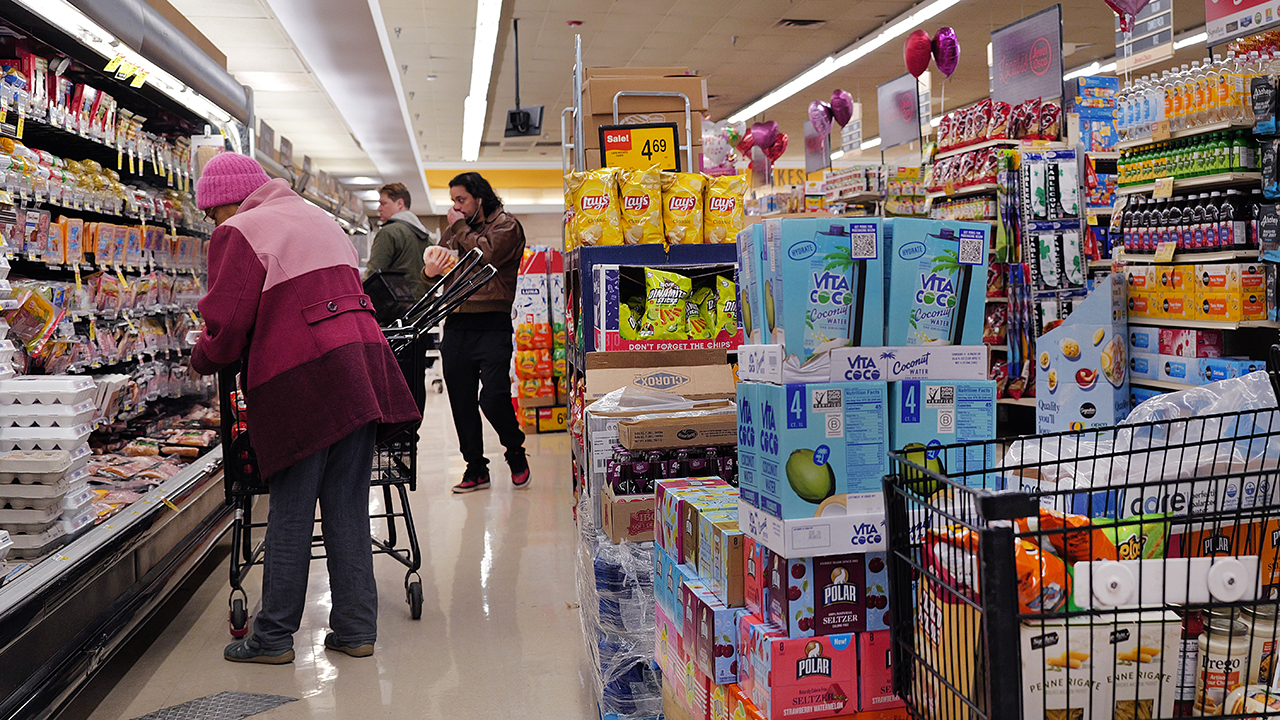Inflation increases 3.4% in April as prices remain elevated
Labor Department releases high-stakes April inflation data
Lower-income consumers are struggling with high inflation: analyst
Bolvin Wealth Management Group President Gina Bolvin discusses the move in commodities, expected inflation data, the housing industry and her outlook for consumers.
Inflation eased slightly in April for the first time in months, a welcome sign for the Federal Reserve even as prices remained uncomfortably high for millions of Americans.
The Labor Department said Wednesday that the consumer price index, a broad measure of how much everyday goods like gasoline, groceries and rent cost, rose 0.3% in April from the previous month. Economists expected to see a 0.4% monthly increase. Prices climbed 3.4% from the same time last year, down from the 3.5% reading in March.
Another data point that measures underlying inflationary pressures within the economy also moderated last month. So-called core prices, which exclude the more volatile measurements of gasoline and food in order to better assess price growth trends, increased 0.3% in April. From the same time last year, the gauge climbed 3.6% — the lowest reading since 2021.
WHY ARE GROCERIES STILL SO EXPENSIVE?
Altogether, the report indicates that while inflation has fallen considerably from a peak of 9.1%, it remains well above the Fed's 2% target.
High inflation has created severe financial pressures for most U.S. households, which are forced to pay more for everyday necessities like food and rent. Price hikes are particularly devastating for lower-income Americans, because they tend to spend more of their already-stretched paycheck on necessities and therefore have less flexibility to save money.
AMERICANS ARE CARRYING A RECORD AMOUNT OF HOUSEHOLD DEBT
Housing and gasoline costs were once again the biggest drivers of inflation last month, accounting for more than 70% of the total monthly increase, according to the report.
Rent costs rose 0.4% for the month and are up 5.6% from the same time last year. Rising rents are concerning because higher housing costs most directly and acutely affect household budgets. Gasoline prices, meanwhile, jumped 2.8% over the course of April. They are up 1.2% when compared with the same time last year.
Consumers received some reprieve on the cost of groceries, which fell 0.2% in April from the previous month. However, grocery costs remain up 1.1% from the same time last year and up more than 21% when compared with January 2021, shortly before the inflation crisis began.

Customers shop at a grocery store in Chicago on Feb. 13. (Scott Olson/Getty Images / Getty Images)
The report comes as Federal Reserve policymakers weigh when to start cutting interest rates amid concerns that progress on inflation has stalled. Investors have steadily dialed back their expectations as central bank officials signal they are in no rush to cut, and that incoming economic data will guide their decision.
Fed Chair Jerome Powell said Tuesday the central bank will need to be patient and wait for evidence that inflation is slowing before it cuts rates.
GET FOX BUSINESS ON THE GO BY CLICKING HERE
"We did not expect this to be a smooth road, but these were higher than I think anybody expected," he said. "What that has told us is that we will need to be patient and let restrictive policy do its work."
Stock futures jumped Wednesday morning as the inflation data fueled investor hopes for rate cuts. Market pricing now indicates the first interest rate cut will come in September, according to the CME Group's FedWatch tool.
"Despite this morning’s encouraging inflation report, the Fed will not likely begin cutting rates until they have more confirmation that consumer prices are easing," said Jeffrey Roach, chief economist at LPL Financial. "After digesting this report, markets expect the first cut to come in September."

